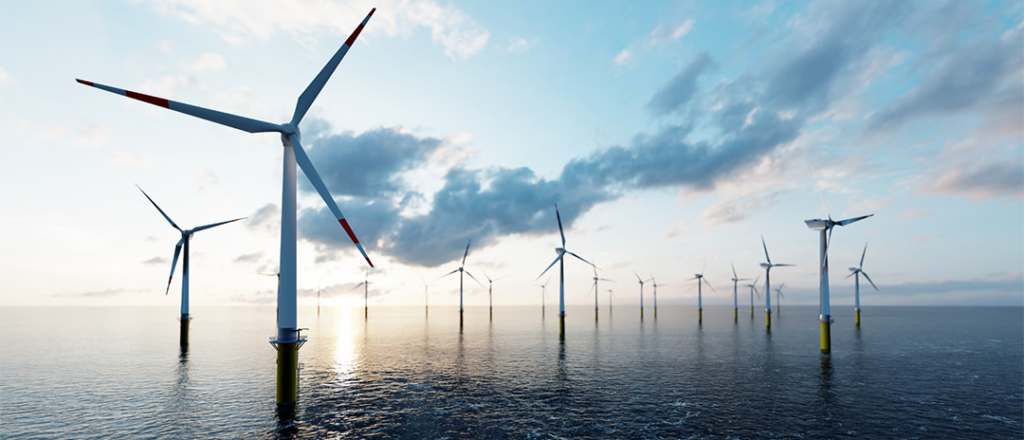In recent years, offshore wind energy has emerged as a promising source of renewable energy in the world. Wind turbines located offshore offer significant potential to meet growing electricity demand in a sustainable way. In this article, we will explore the potential and challenges of offshore wind energy on the global stage.

Unlimited potential in our oceans:
The oceans cover more than 70% of the Earth’s surface, and many of the densely populated coastal areas are located close to the sea. This makes offshore wind energy an attractive option for meeting the electricity demand of urban areas, taking advantage of stronger, more consistent winds that offer almost unlimited potential for producing clean electricity.
Let’s look at the Strategic Advantages of Offshore Wind Energy:
- Consistency of Winds: Winds over sea are generally stronger and more constant than on land, providing more stable electricity production.
- Proximity to Urban Centers: Many of the world’s main cities are located close to the coast, which reduces the need for long transmission lines.
- Reducing Carbon Emissions: Offshore wind energy plays a key role in reducing greenhouse gas emissions and combating climate change.
- Energy Diversification: The diversification of the energy matrix with offshore wind energy improves energy security and resilience.
On the other hand, despite the great potential, the challenges to be overcome are:
- High Initial Cost: Installing and maintaining turbines at sea is expensive, although costs are gradually decreasing as technology evolves.
- Environmental Impact:The construction and operation of offshore wind turbines can have impacts on marine life and coastal ecosystems, requiring careful environmental assessments.
- Complex Maintenance: Maintenance of offshore wind turbines is technically complex and can be challenging due to marine conditions.
- Regulations and Policies: Appropriate regulations and policies are essential to ensure the sustainable development of offshore wind energy.
Offshore wind energy is an example of how nations can collaborate to address the global challenges of climate change. With investments in research and development, international cooperation and strong regulations, it is possible to unlock the potential of offshore wind energy and accelerate the transition to a cleaner, more sustainable energy future.
Offshore wind energy is not just a source of electricity, but a bridge to a greener, more prosperous future. With continued efforts and strategic investments, we can fully harness the potential of our oceans to generate clean energy and combat climate change.



